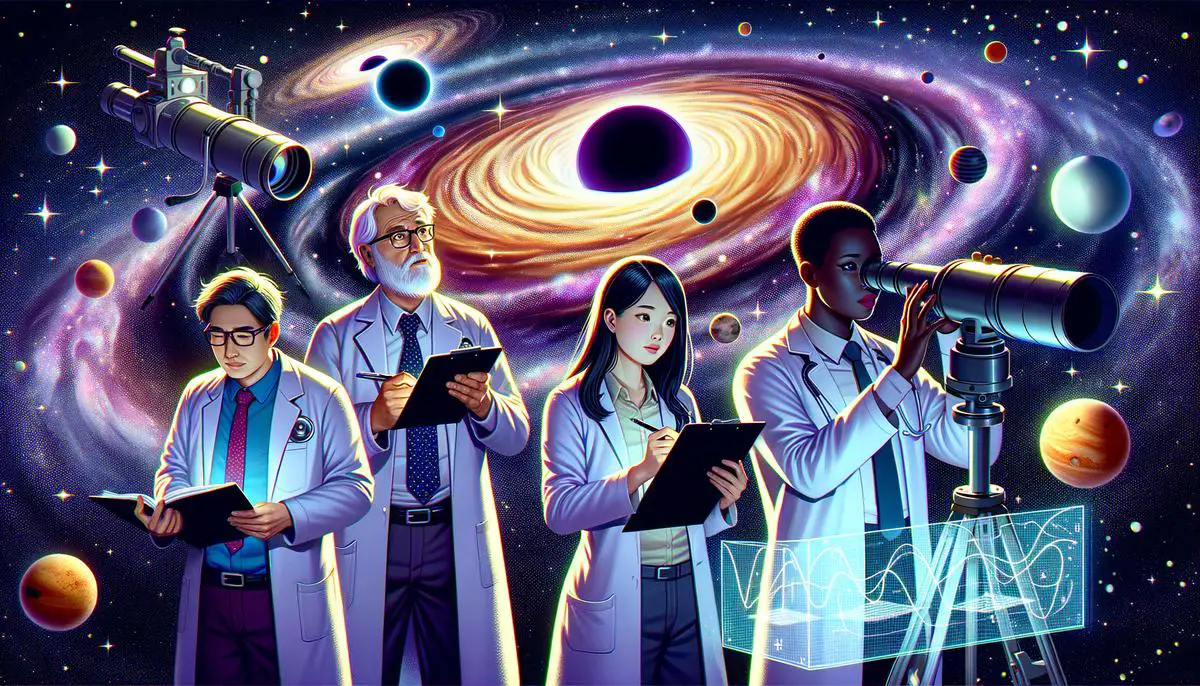Black holes are among the universe’s most enigmatic and captivating phenomena, with Gargantua black holes taking a special place in the cosmic hall of fame. Diving into the heart of theoretical physics, we explore the intricate framework that brings Gargantua black holes from science fiction into scientific plausibility. The dance of gravity as described by Einstein’s general relativity sets the stage for understanding these immense entities. Imagine a journey through space where we peel back the layers of mystery surrounding these cosmic giants, as cutting-edge research sheds light on their formation, properties, and the pivotal role they play in the grand tapestry of the cosmos.
The Science Behind Gargantua Black Holes
Gargantua Black Holes: Unraveling the Science Behind Cosmic Giants
When we think of power in the universe, black holes often come to mind as some of the most mysterious and awe-inspiring objects in space. Gargantua black holes, a term made popular by science fiction, refer to supermassive black holes that are millions, if not billions, of times the mass of our Sun. But what’s the science behind these incredible cosmic phenomena?
At the heart of a gargantua black hole lies a singularity, a point with such dense mass that its gravitational pull is unstoppable. Everything that gets too close, including light, can’t escape. This point is surrounded by the event horizon, a boundary marking the point of no return. Once crossed, there’s no coming back from the intense gravitational grip of the black hole.
Scientists use equations from Einstein’s theory of general relativity to understand the fabric of spacetime around black holes. This theory explains how massive objects bend spacetime, and in the case of gargantua black holes, they do so to an extreme. It predicts the presence of these black holes at the centers of most galaxies, influencing the movement of stars and gas clouds orbiting around them.
A pivotal concept in studying gargantua black holes is accretion — the process by which they grow. As black holes pull in matter, some of it spirals into an accretion disk, heating up and emitting immense quantities of energy. This energy output can be so powerful it emits X-rays that we can detect from Earth, allowing astronomers to study black holes that are light-years away.
Another wonder of gargantua black holes lies in their spin. The spin of a black hole affects the movement of space around it. Think of it as a cosmic ice skater pulling in their arms, spinning faster as their shape narrows. For black holes, as they absorb matter, they can spin more rapidly, twisting space with them. Scientists can measure this spin to learn more about a black hole’s history and its surrounding environment.
To delve even deeper, researchers study gravitational waves – ripples in spacetime that emerge when black holes collide. Detecting these waves lets scientists peek into the events leading to the formation of gargantua black holes.
The existence of these gargantuan black holes poses intriguing questions. For instance, their influence on the birth and evolution of galaxies is a hot topic of study. They might play a role in the regulation of star formation within galaxies, serving as a central engine that dictates the life cycle of surrounding celestial bodies.
The study of gargantua black holes is not merely an academic exercise; it’s a quest to understand the fundamentals of our universe. By unraveling the mysteries of these space-time titans, we get closer to comprehending the grand architectural plans of the cosmos. From the swirling chaos of a black hole’s birth to the serene pull of its event horizon, each discovery is a piece of the puzzle, bringing the picture of our universe into clearer focus.
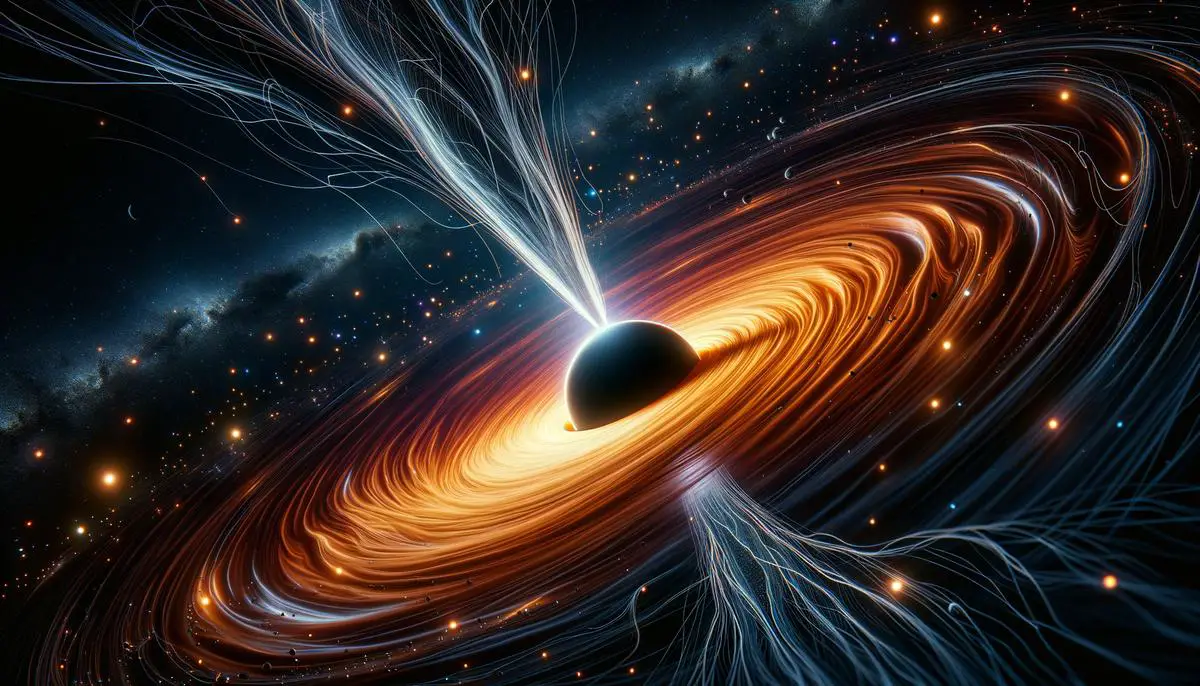
Observational Techniques and Discoveries
Astronomers have a special toolbox when it comes to studying the most massive, mysterious objects in the universe: gargantua black holes. These cosmic giants don’t let light escape, making them invisible to the naked eye and traditional telescopes. But don’t let that fool you. Scientists have clever ways of catching these celestial hide-and-seek champions.
First off, astronomers look for clues in the light around a black hole. When a gargantua pulls in gas and dust, this stuff heats up as it swirls around, forming an accretion disk that glows hot and bright. Telescopes that can see X-rays and other high-energy radiation can detect this disk, even if the black hole itself stays hidden. It’s like seeing a flashlight’s beam in a foggy room – you may not see the source, but you know it’s there because of the light.
Next on the list are powerful jets. Some gargantua black holes shoot out insanely fast streams of particles going nearly the speed of light. These jets send out radio waves that telescopes on Earth can pick up. It’s like hearing the roar of an airplane overhead. Even if you can’t see it, you know it’s up there because of the sound it makes.
Another thing astronomers use is gravitational lensing. This occurs when a black hole’s gravity is so strong, it bends and magnifies the light from stars and galaxies behind it. Large telescopes capture this space spectacle, which can tell us not just the black hole’s mass, but also act like a cosmic magnifying glass, giving us a peek at what’s beyond them.
Astronomers also keep tabs on the dance of stars around a black hole. Some stars don’t get swallowed up right away – they end up orbiting the black hole. Like clockwork, these stars follow paths shaped by the black hole’s gravity. By studying these orbits, especially with infrared telescopes that can peer through cosmic dust, scientists can measure the black hole’s mass and location.
Finally, don’t forget about supercomputers. They take all the data astronomers gather and crunch the numbers, simulating what might be happening around a black hole. These simulations help us understand the things we can’t see directly, like the detailed structure of the accretion disk and the chaotic region just outside the event horizon.
In conclusion, while astronomers can’t take a snapshot of a gargantua black hole themselves, they’ve got some impressive tools and techniques to study these cosmic wonders. Each method is a piece of a larger puzzle, helping us to understand where and how these giants lurk in our universe, influencing everything around them with their immense gravity, and allowing us to keep expanding our knowledge of the vast cosmos we call home.
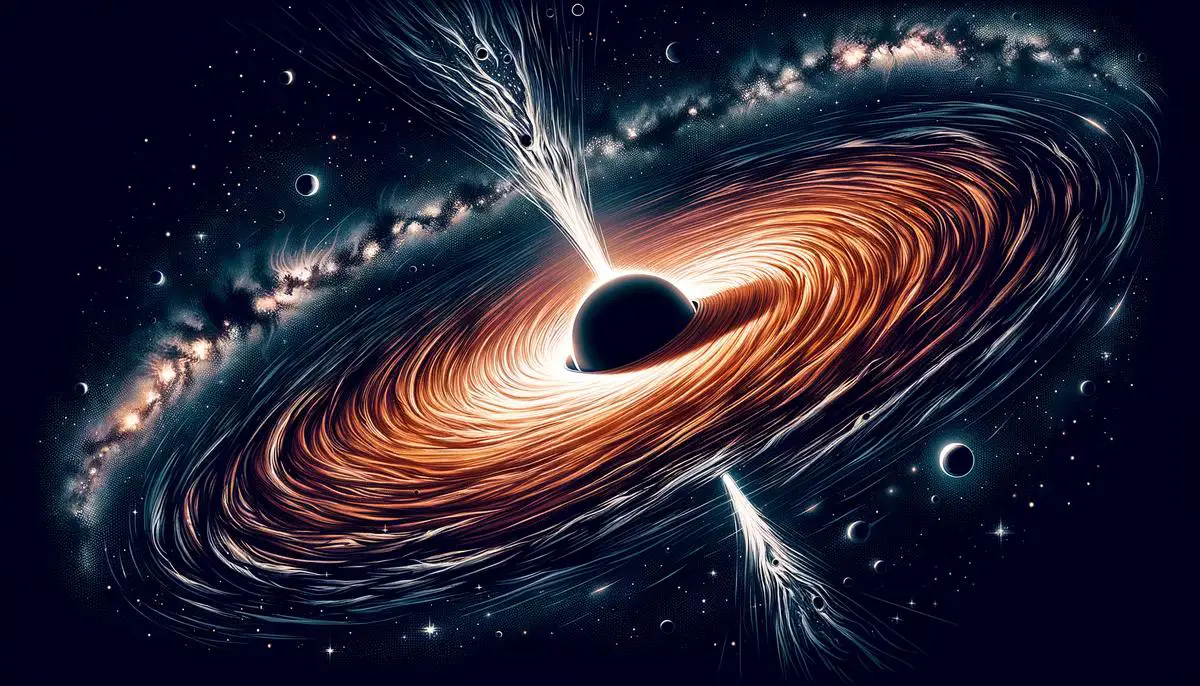
The Role of Gargantua Black Holes in Galaxy Formation
Gargantua black holes are not simply enigmatic features of space; they play a pivotal role in the development and shaping of galaxies. These cosmic behemoths reside at the heart of most, if not all, large galaxies. They profoundly influence their environments despite their relative size being minuscule compared to the galaxy itself. Here’s how these titanic entities contribute to galaxy formation and behavior.
As galaxies begin to form, these supermassive black holes, often millions to billions of times more massive than our sun, act like cosmic anchors. They exert a significant gravitational force that can dictate the dynamics of galaxy formation. Moreover, the energy they release as they feed is powerful enough to regulate the growth of their host galaxies. As gargantua black holes draw matter inwards, they spew out immense amounts of energy through quasar activity – brilliant beacons of light that can outshine whole galaxies. This process can quench star formation by heating and ejecting the surrounding gas that would otherwise condense into new stars, keeping a galaxy from growing too quickly.
The effect of a gargantua black hole on a galaxy also depends on its dining habits – whether it’s actively feeding or lying dormant. When active, the energy injected by a gargantua can disrupt the cold gas in a galaxy, thereby influencing the birth and lifespan of stars. This balance between the black hole’s appetite and the galaxy’s star-forming material underscores a symbiotic relationship that steers a galaxy’s lifecycle.
Furthermore, the spin of a gargantua black hole can induce orderliness in the cosmic chaos. It may help organize and maintain the rotation of the galaxy. Some theories suggest that this rotational effect can create a magnetic field, which further impacts the movement and behavior of the interstellar medium – the gas and dust between stars – within the galaxy.
In the grander scale of cosmic evolution, the collision of galaxies, a not so rare occurrence in the universe, can lead to the merging of their central black holes. These mergers have profound implications, potentially creating even more massive gargantua black holes that can restructure the newly formed galaxy. Observing these collisions and the gravitational waves they produce allows scientists to predict the future dynamics of galaxies.
Crucially, the very existence of galaxies as we see them might be owing to these gargantuan black holes. They are not just silent sentinels at the centers of galaxies; they are dynamic engines that drive the cosmic evolution of structures across the universe. We continue to unravel the mysteries of these mighty cosmic features through the signals they send out and the mark they leave on the fabric of space, leading us to a greater understanding of the cosmic web that binds the universe together.
The spectacles of gargantua black holes stretch beyond human perception; these invisible yet influential forces reveal the universe’s most profound secrets through their indelible impact on the galaxies they inhabit. Understanding them is understanding the universe’s very essence and the astronomical ballet that steers the life of galaxies across the eons.
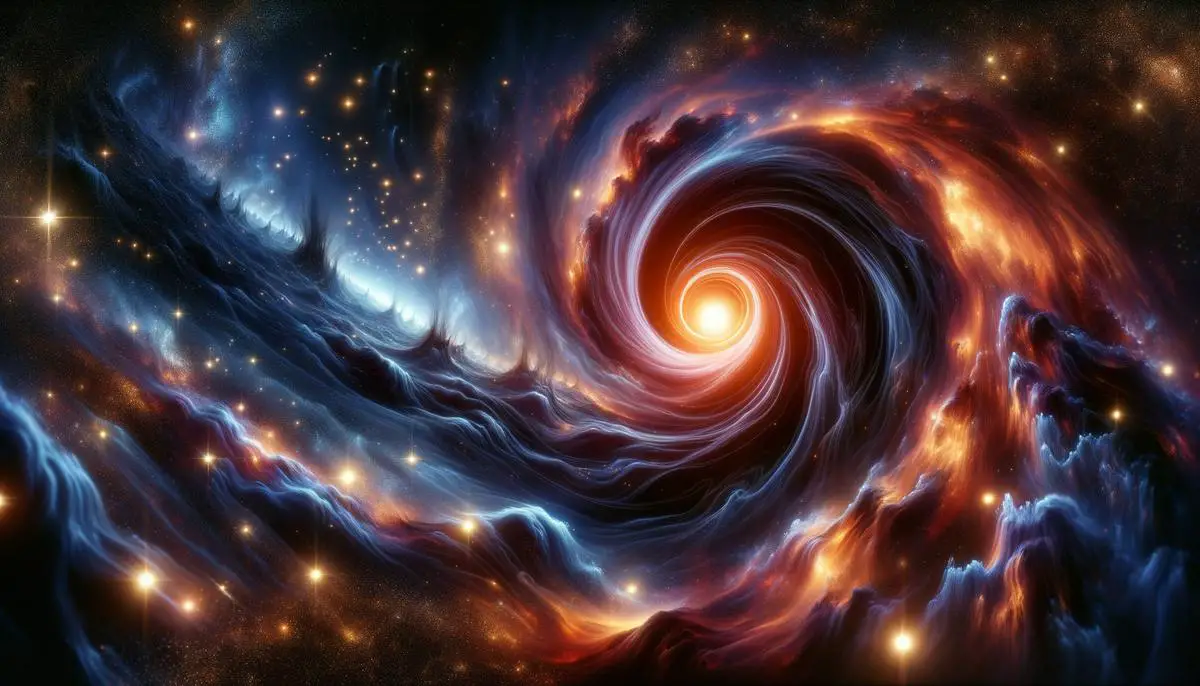
Simulation and Visualization of Black Holes
Advancements in simulating and visualizing Gargantua black holes have been impressive and quite pivotal in the realm of astrophysics. Researchers and scientists use state-of-the-art computational methods to peel back the layers of mystery shrouding these cosmic giants.
At the forefront of these technological strides are supercomputers, which have the power to crunch the complex equations derived from Einstein’s theory of relativity. This computational might allows scientists to simulate the extreme gravitational fields near Gargantua black holes. By feeding data on mass, spin, and electric charge into these algorithms, supercomputers create models that show how light would bend and twist in these intense environments.
One breakthrough in visualization came from the Event Horizon Telescope (EHT) project, which, in 2019, captured the first-ever image of a black hole’s event horizon, specifically the supermassive black hole in the galaxy M87. This global network of radio telescopes synthesized data to reveal the shadow of a black hole, surrounded by a bright accretion disk. While not a Gargantua black hole, this achievement laid the groundwork for enhancing techniques for simulating larger, more complex systems.
Furthermore, advancements in rendering software and graphics technology have permitted the portrayal of black holes in visual media with remarkable accuracy. The movie “Interstellar,” for example, presented a scientifically-informed visualization of a Gargantua black hole. The filmmakers collaborated with physicist Kip Thorne, who produced a series of equations that guided the stunning depiction of the black hole’s accretion disk and its warping of light.
The visualization of Gargantua black holes isn’t just about creating spectacular images– it’s also a critical tool for scientific discovery. By simulating the behavior of matter and light near these massive objects, researchers can test theories of gravity and quantum mechanics, and even explore the possibility of exotic phenomena like wormholes.
Recent simulations have also examined the magnetic fields around Gargantua black holes and how they interact with the accretion disk. These simulations suggest that not only does the spin of a black hole affect its surroundings, but the magnetic field plays a crucial role in the direction and power of the jets that can shoot out from the poles of the black hole. This helps scientists understand how energy is transferred from the black hole to the wider universe.
In education and public outreach, improved visualization techniques have allowed for more immersive experiences, such as virtual reality tours into the heart of a black hole, or augmented reality apps that bring a model of a black hole right into the classroom or living room. These tools not only broaden public interest and knowledge about black holes but also help inspire future researchers to further unravel the secrets of these cosmic phenomena.
In summary, the advancements in simulating and visualizing Gargantua black holes have propelled our understanding forward, turning what once were theoretical concepts into vivid, almost tangible experiences. Through the synergy of technology and science, we continue to edge closer to decoding the enigmatic nature of the universe’s most mysterious objects.
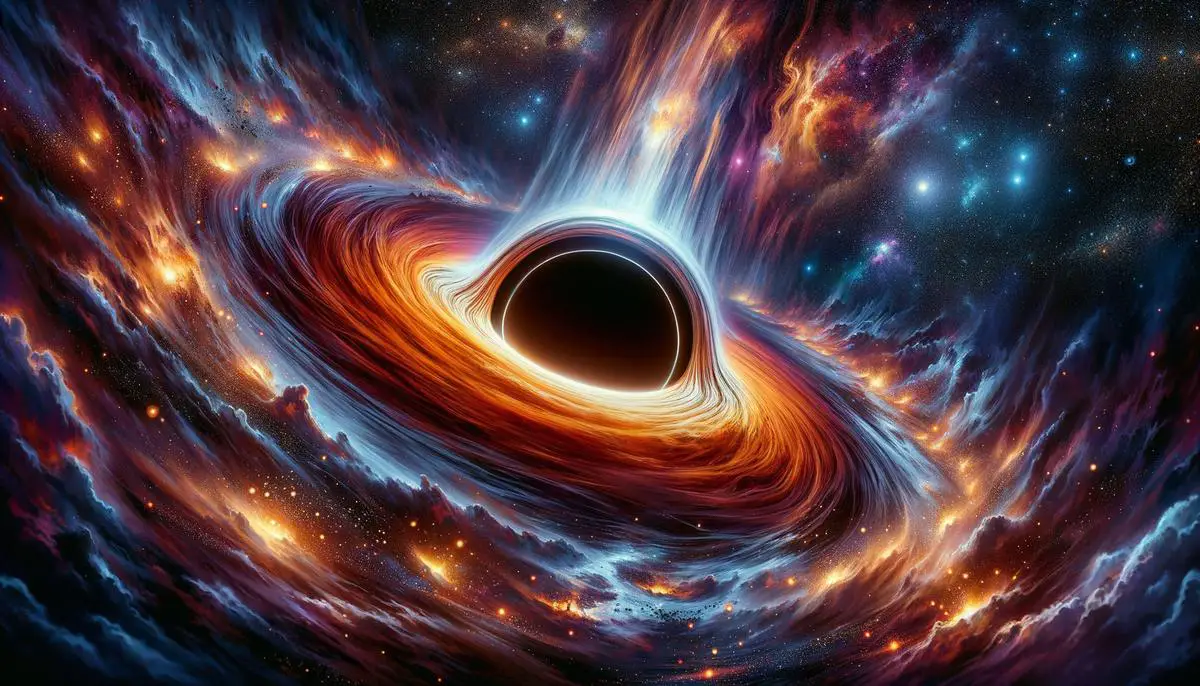
The Future of Black Hole Research
Delving deeper into the future of Gargantua black hole research, we encounter a realm where collaboration and technology intersect to expand our cosmic horizons. Scientists across the globe are gearing up for an era of unprecedented exploration fueled by advancements in observational tools and computational prowess.
One of the most anticipated projects is the next-generation Event Horizon Telescope (EHT), an array so immense in scope and sensitivity that it could theoretically map the event horizon’s structure in finer detail. This refined version of the EHT would offer scientists a closer look at the edge of reality, probing the areas where the black holes’ gravitational pull is so intense that not even light can escape.
In the same vein, space-based observatories are on the drawing board, promising to bypass the blurring effects of Earth’s atmosphere. These observatories will aim to detect the faint whispers of X-rays and gamma rays emitted from the extreme environments of Gargantua black holes, providing a clearer picture of their properties and behavior.
Researchers are also buzzing about the potential of gravitational wave astronomy. As facilities like LIGO and Virgo upgrade their instruments, the sensitivity to gravitational waves—ripples in the fabric of spacetime—will enhance. This could lead to routine detections of black hole mergers, each one a treasure trove of information revealing the mass, spin, and even the possible presence of a hair or two on these cosmic baldies, as predicted by Einstein.
But the future isn’t all about looking outwards; it’s also about delving inward towards the quantum level. Quantum gravity theories, such as string theory and loop quantum gravity, hold promise in solving the enigma of the singularity – the point of infinite density at a black hole’s heart. Researchers are hopeful that these theories may reconcile the clash between general relativity and quantum mechanics, thus painting a complete picture of black hole physics.
Moreover, artificial intelligence (AI) is set to take a lead role in sifting through mountains of data, learning patterns, and extracting insights that might elude human researchers. AI-driven analysis could lead to the discovery of new black holes, perhaps even revealing subclasses or behaviors that we have yet to imagine.
Lastly, citizen science projects, harnessing the power of public interest, grant armchair astronomers the thrill of discovery. By engaging with data and participating in global research efforts, the public contributes to the cataloging of black hole phenomena and fosters a new generation of astrophysics enthusiasts.
As we look to the future, one thing is clear: the mysteries of Gargantua black holes beckon like lighthouses in the dark sea of space, and our quest to understand them is only going to deepen. With each technological stride and collaborative effort, we continue to edge closer to unraveling the cosmic tapestry of which these enigmatic entities are a fundamental thread.
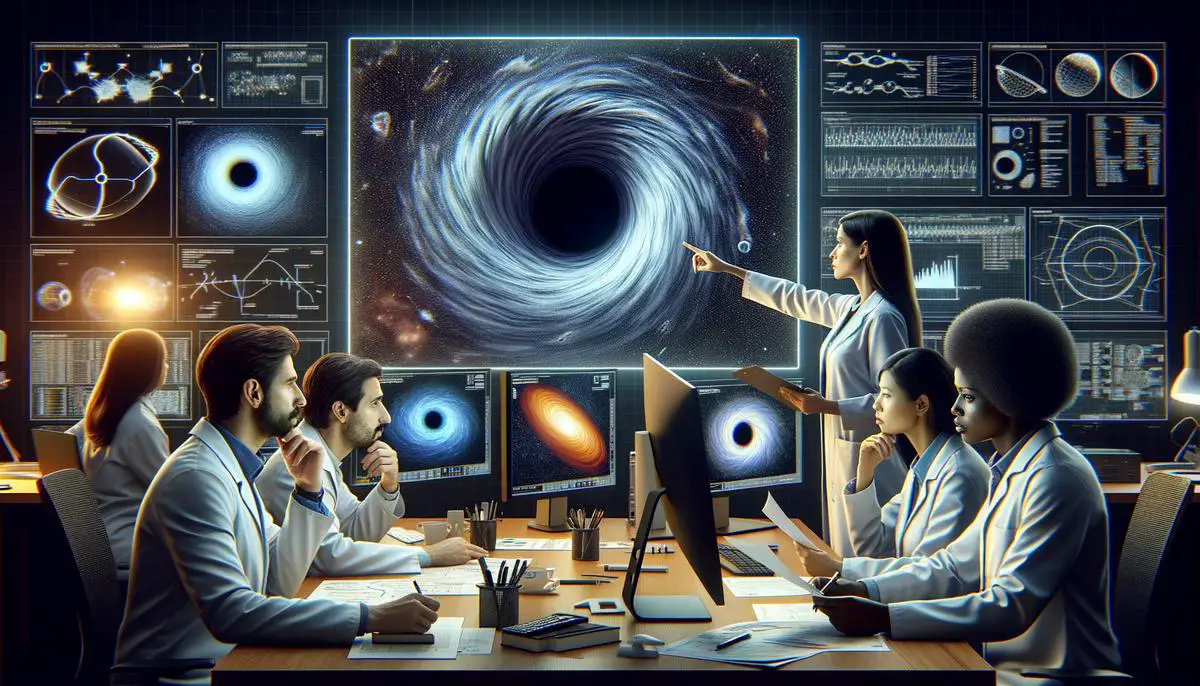
As we stand on the brink of new astronomical epochs, the study of Gargantua black holes and their kin remains a vibrant field ripe with possibility. Our odyssey through the cosmos brings us closer to unraveling the secrets of supermassive black holes, enriching our understanding of the universe and our place within it. From the technologies that capture their shadows to the simulations that bring their horizons to life, each advancement propels us forward. With eyes fixed on the heavens, we continue to quest for knowledge, ready to embrace the wonders that await in the vast dark sea of space.
![]()
